Kyoto, Day Two
Or, Always Travel With Anti-Histamines
This being my first actual full day in Japan, I was kind of dismayed at having to sleep in because allergies made it really hard to sleep at night. No doubt I was incredibly annoying to my bunk mates but! There was a guy rooming with us who suffered from...sleep apnea. Which is like snoring, but so bad, that your breathing cuts out every once in a while.
God, it was like listening to someone with pneumonia die. I kept wondering if he was actually going to be alive in the morning, and I felt bad because he was blind, too.
Anyway, moving on. Kyoto is covered in random shrines. They're all over the place, and the smaller ones are generally open to the public for free. This one I kind of walked into, and didn't see anyone. So I took some pictures and left.
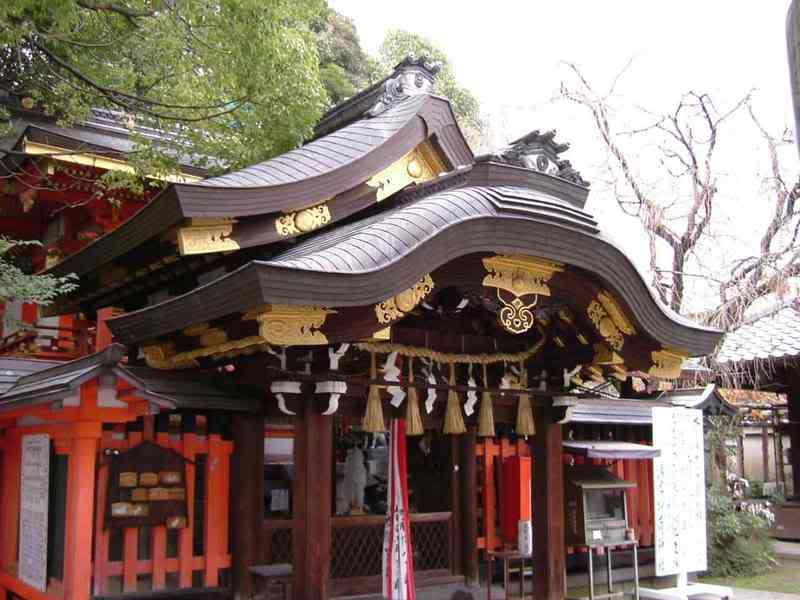

I'd like to say more about it, but I don't even know it's name. Get used to the shrines, though, there's more where that came from.
Also, while walking around (still with Sigma strapped to my back), I ran into this.
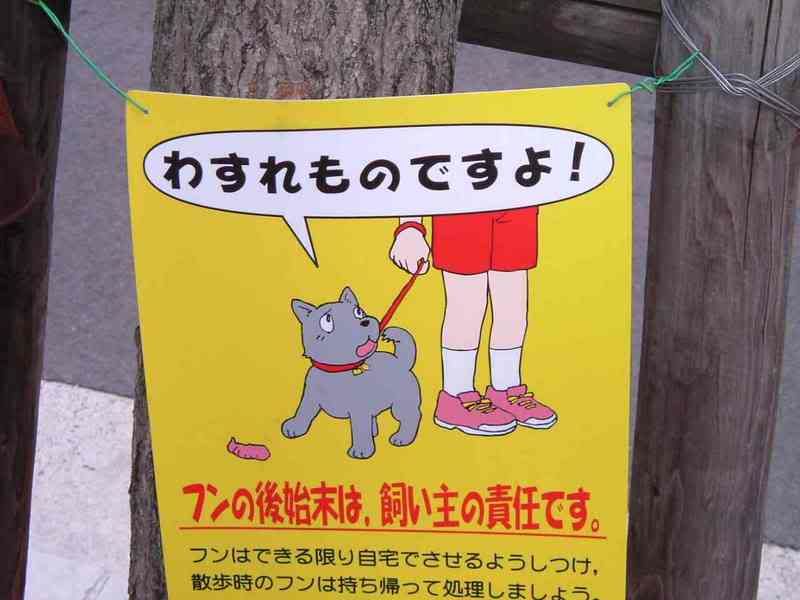
The Japanese are capable of making absolutely anything cute. Look at him! He's so embarrassed! 'Look, I'm sorry, but I just, you know...' Awwww.
Wow, less than a full day in and I'm already making scat jokes.
In any case, the closest thing to my base camp was the Heian Jingu shrine, which is apparently important, so I headed off to there. There was a canal on my way, which is apparently a component of the Lake Biwa aquaduct, an ancient project rerouting water from a nearby lake, which is faithfully reproduced here:

Heian Jingu Shrine
One of the nice things about Japan -- or Kyoto, anyway -- is that most of its historical relics are in very good shape. Heian Jingu, as you can see, has a fresh coat of paint, and is in good repair.
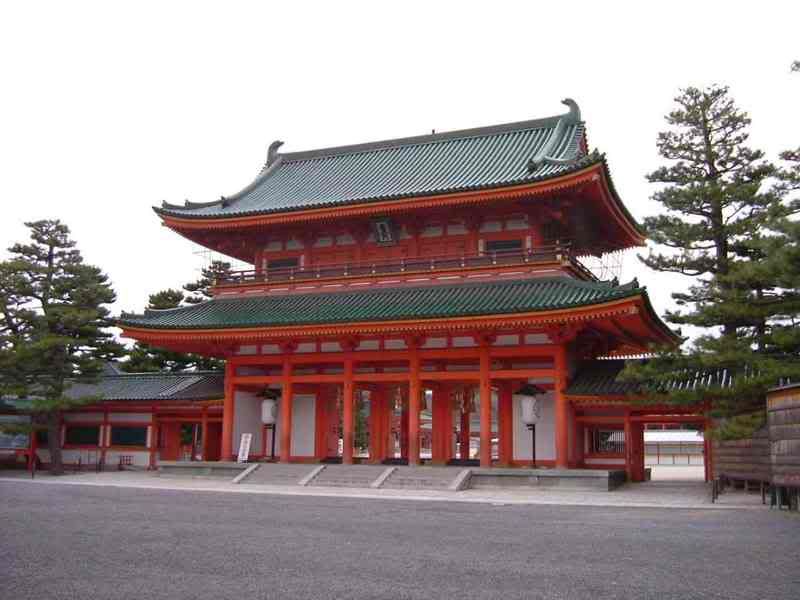
There are also a lot of priests and priestesses running about, taking care of things. I'm not certain if it's just a uniform staff wear for the appearances of the temple or if they are actual religious adherents, but it seems like many areas were closed off only to them as well as what I think were living quarters, so it's entirely possible.
There are prayer boards like this all over the place too, and you can shell out some monies to buy one, write your prayers on it, and have a priest pray for you (along with all the rest) to the gods of the shrine.
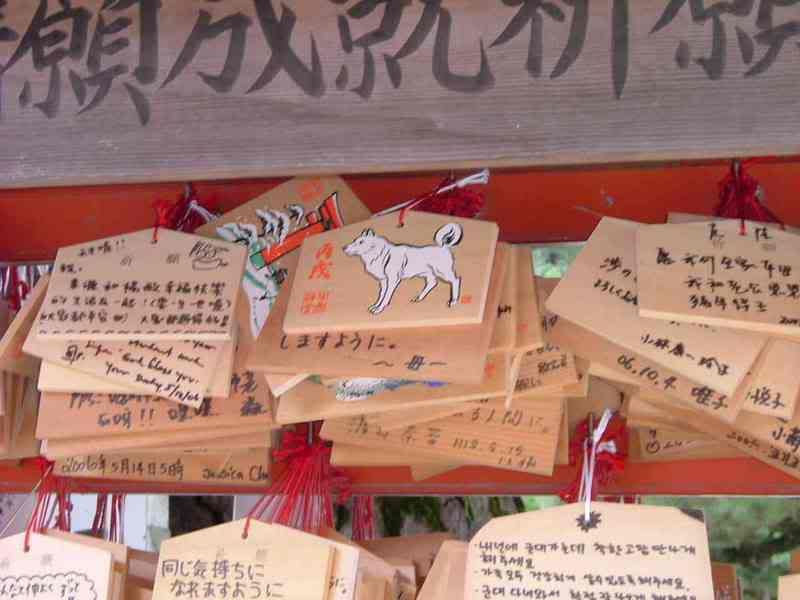
I think this is a largely Shinto tradition, but Shinto and Buddhism have become indistinguishable in many of the shrines and temples of Japan as a result of the interaction of the two, must as Christianity has adopted many Pagan and Roman rites to ease transitions.
a href="http://photobucket.com/" target="_blank">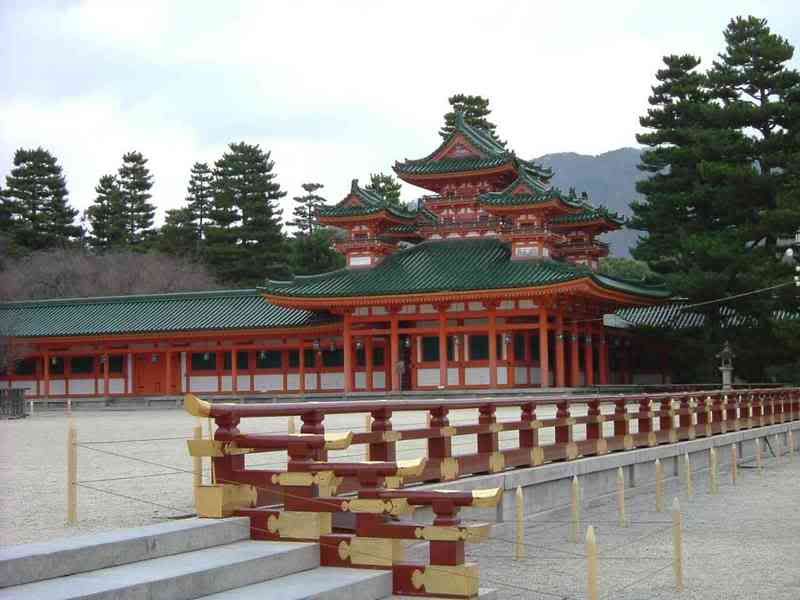
More shrine. Later on there was a guy painting down by that one banister, and doing a pretty good job, too.
There was also, as with many shrines and other sacred places, a very well maintained garden. The charge to get in was a bit steep and I kind of paid it without thinking because I hadn't completely worked out the currency conversion yet. I thought I wasn't going to see any flowers but I guess I was wrong.
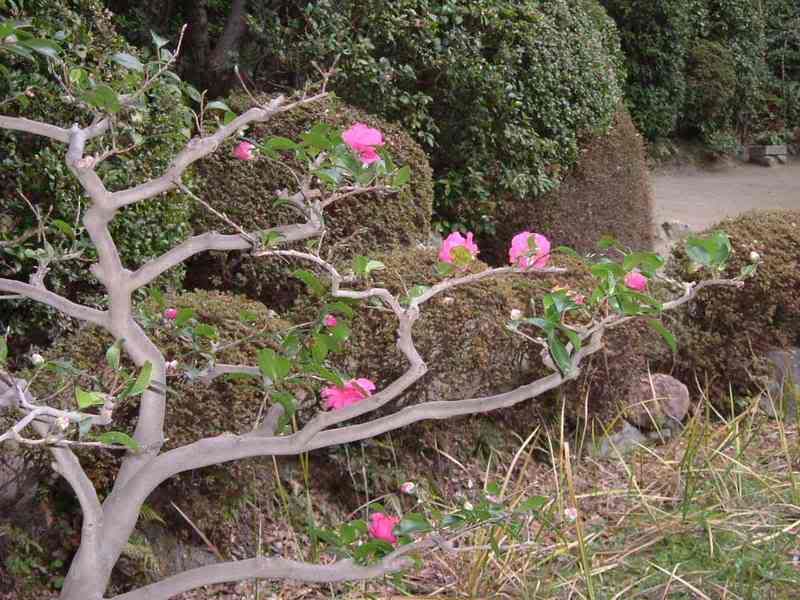
What are these, camellias? I don't really know, I'm not a horticulturalist by any means, but they were in bloom. I should mention, too, that the clime in Japan right now is very mild. No snow at all, almost autumny conditions. Many deciduous trees still have leaves.

Ponds are popular additions to Japanese gardens.
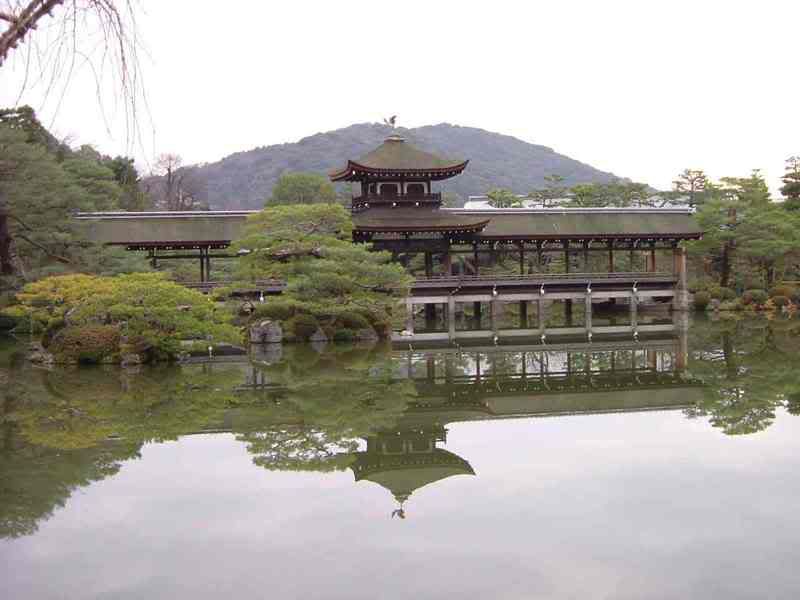
This was the guest house, I think, and you can't see it in the picture, but the internal screens were gilded and painted with images of cranes. Very nice, but this was as close as I was going to get.
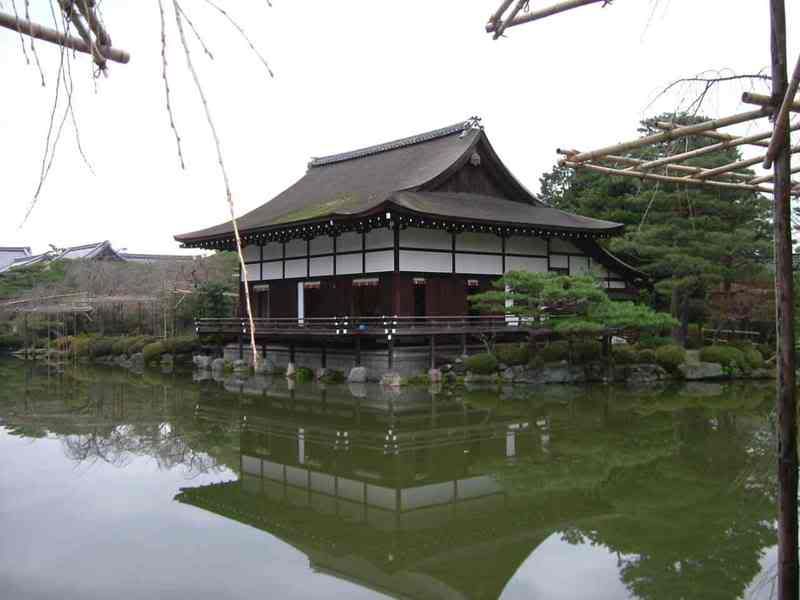
Kyoto Municipal Art Museum
This was rather interesting, actually. You can see a mixed influence of architecture in the building, with Western walls and an Oriental roof. The same is true of much of its contents, minus the calligraphy.
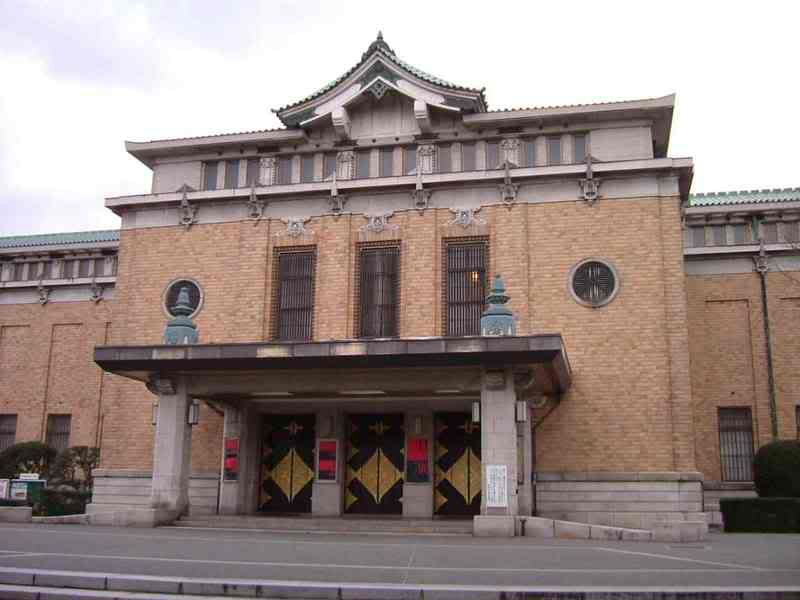
This museum contains exclusively works by Japanese contemporary artists, many of whom have adopted methods and techniques from western sources. The most interesting aspect of this mixing of cultures was the re-application of styles to Japanese or contemporary subjects. For instance there was a painting of a man playing a lute. I thought, at first glance, that it was by a Renaissance artist -- but on closer inspection the man was very asian in appearance. In another, pointillism depicted a Japanese fishing village. In another, surrealist-cubist style depected a Japanese port. And so on.

Lunch: Tonkatsu
Breaded pork cutlets very similar to Donkass. Also, I got breaded prawns too, with much better sauce. Still nothing but shredded cabbage for a side dish, but all was forgiven over an excellent miso soup with all kinds of stuff in it.
When I left the restaurant, I ran into...this.
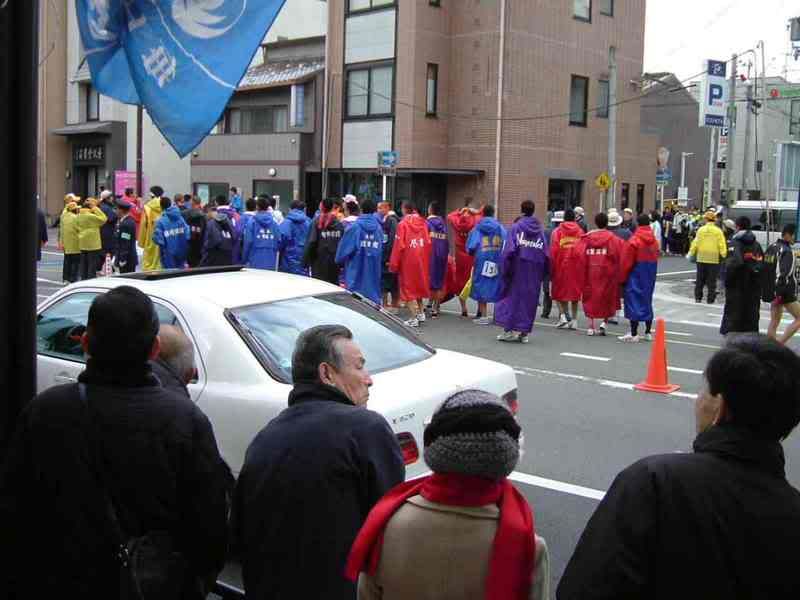
No idea what's going on, so let's keep going.
The Imperial Park
Okay, so this is the area around the Imperial Palace, where the Emperor of Japan and his family still lives.
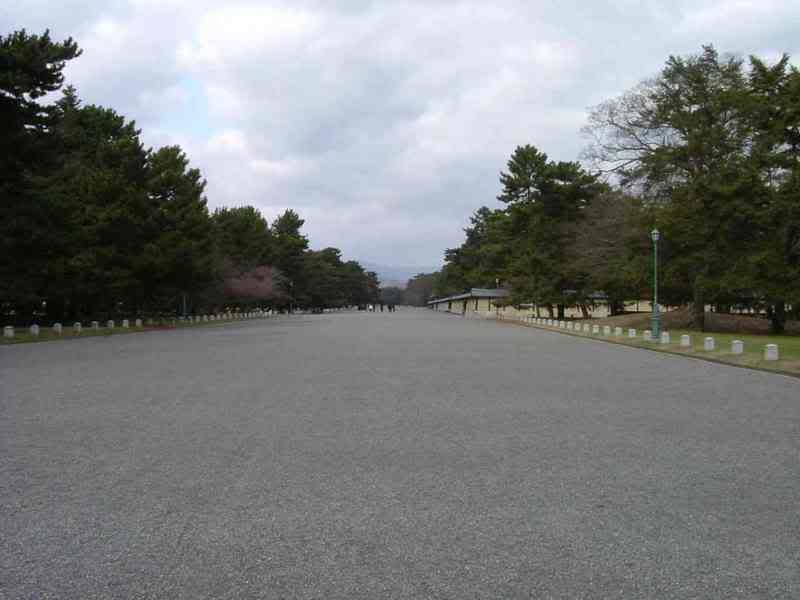
Everything is very grand and stately, and that series of wall you can see in the background isn't actually the imperial compound, but another minor palace. It actually contains mostly gardens right now, so I think it might be the Emperor's private gardens outside of the palace itself. Not sure.
Lots of crows in Japan -- where we have pigeons and gulls, where Korea has magpies, Japan has crows. Or maybe ravens? They were damn big crows, anyway, and tons in the Imperial Park. As a matter of fact, I should mention that Japan seems to have better urban avian diversity than we do in North America. I have seen all manner of ducks and egrets wading in their canals and rivers, tons of song birds, and on my way to the Imperial Park, I saw a pair of Golden Eagles hunting pigeons by the river side. They didn't make a successful attempt I could see, and I tried to get a picture, but they were too damn fast.
Conversely I didn't see a single squirrel or raccoon or whatever.
Derail over. This is the palace entrance, and the closest any of you has been to the Japanese Emperor of Japan. Beat that.
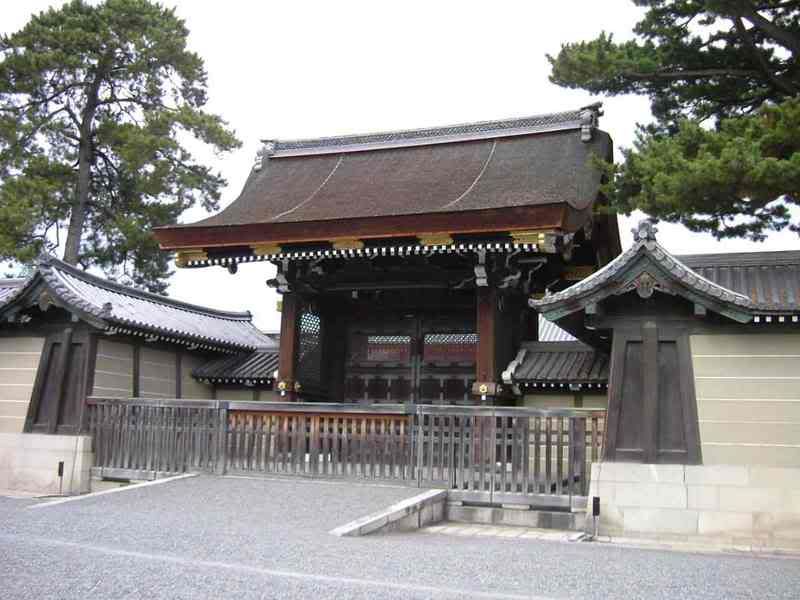
To give you an idea of the sheer size of the palace complex, here's a picture of the one outside wall. The inside is roughly a square, so that should give you something to work with.
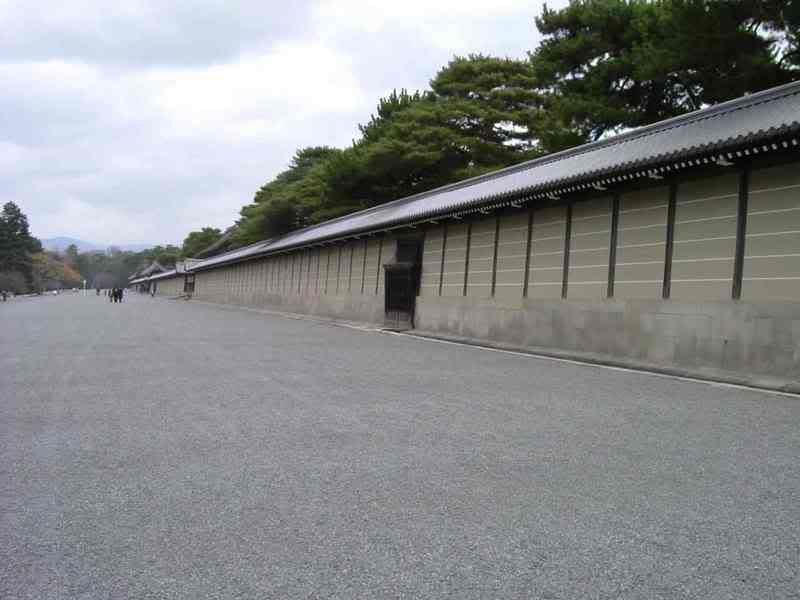
On my way out the other side of the park, I ran into this again:
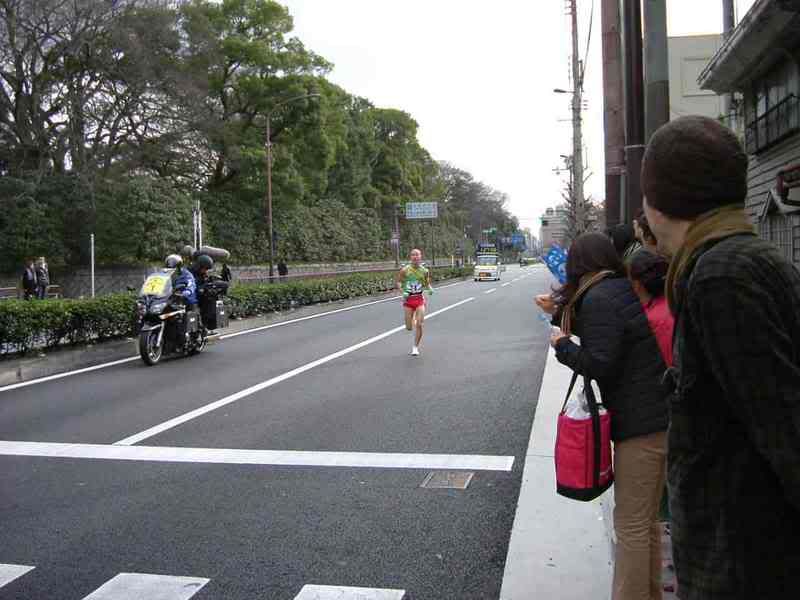
A nice lady gave me a map and explained that this was the All-Japan Relay Marathon or something. Apparently in Japan, high school sports are SERIOUS BUSINESS, because this was a fully televised event with helicopter coverage and police escort. These kids are 14-15, and running in legs of 4 to 10 kilometers for the glory of their high school, which I presume represent the best school team from each region of Japan.
Japanese cheerleaders were out in force along with hordes of civilian well-wishers, so it was hard to hear anything above people shouting 'Gambatte' and chanting what I presume are school mottoes or anthems. Japanese cheerleading squads are not the cheesecake fests they are over here, which was kind of disappointing. Usually their are even teams of boys and girls, usually with banners, flags, or headbands, and they do a lot of coordinated shouting.
[Edit: I totally forgot, I also stumbled into the Kyoto International Manga Museum, haha. I'm a dork.]
Anyway. Not much else happened on Day Two in the tourism department. I ended up seeing the Kyoto municipal museum, which had a historical overview of the area, but it was small, overpriced, and not in a language I could read, so I went back to the hotel.
One of my roommates was on his vacation from a Tokyo-area university, spoke English quite well, so we went out for:

Dinner: Yakitori and sake
Yakitori is basically 'yaki' meaning grilled, and 'tori' meaning chicken. Or bird. In any case, I'm pretty sure it was chicken. It's basically little kebabs of different parts of the chicken for tasty eating. You also don't really eat this without drinking, apparently, so I gave the sake a shot.
Sake is deceptively mild tasting for something that is roughly 25 % ethanol. One cup about a third the size of a pint was enough to get me heavily buzzed. Also, I think I should recommend it be drunk warm. It seems rather comforting that way.
We walked around for a bit and compared school systems. Apparently as soon as Keigo graduates, he has a position secured at Mitsubishi, and has for some time. There is considerable pressure on students to choose specialized career paths early, it seems, which would not work for me at all.
More Lemon Pepsi later from the Boss, and then bed.
This being my first actual full day in Japan, I was kind of dismayed at having to sleep in because allergies made it really hard to sleep at night. No doubt I was incredibly annoying to my bunk mates but! There was a guy rooming with us who suffered from...sleep apnea. Which is like snoring, but so bad, that your breathing cuts out every once in a while.
God, it was like listening to someone with pneumonia die. I kept wondering if he was actually going to be alive in the morning, and I felt bad because he was blind, too.
Anyway, moving on. Kyoto is covered in random shrines. They're all over the place, and the smaller ones are generally open to the public for free. This one I kind of walked into, and didn't see anyone. So I took some pictures and left.


I'd like to say more about it, but I don't even know it's name. Get used to the shrines, though, there's more where that came from.
Also, while walking around (still with Sigma strapped to my back), I ran into this.

The Japanese are capable of making absolutely anything cute. Look at him! He's so embarrassed! 'Look, I'm sorry, but I just, you know...' Awwww.
Wow, less than a full day in and I'm already making scat jokes.
In any case, the closest thing to my base camp was the Heian Jingu shrine, which is apparently important, so I headed off to there. There was a canal on my way, which is apparently a component of the Lake Biwa aquaduct, an ancient project rerouting water from a nearby lake, which is faithfully reproduced here:

Heian Jingu Shrine
One of the nice things about Japan -- or Kyoto, anyway -- is that most of its historical relics are in very good shape. Heian Jingu, as you can see, has a fresh coat of paint, and is in good repair.

There are also a lot of priests and priestesses running about, taking care of things. I'm not certain if it's just a uniform staff wear for the appearances of the temple or if they are actual religious adherents, but it seems like many areas were closed off only to them as well as what I think were living quarters, so it's entirely possible.
There are prayer boards like this all over the place too, and you can shell out some monies to buy one, write your prayers on it, and have a priest pray for you (along with all the rest) to the gods of the shrine.

I think this is a largely Shinto tradition, but Shinto and Buddhism have become indistinguishable in many of the shrines and temples of Japan as a result of the interaction of the two, must as Christianity has adopted many Pagan and Roman rites to ease transitions.
a href="http://photobucket.com/" target="_blank">

More shrine. Later on there was a guy painting down by that one banister, and doing a pretty good job, too.
There was also, as with many shrines and other sacred places, a very well maintained garden. The charge to get in was a bit steep and I kind of paid it without thinking because I hadn't completely worked out the currency conversion yet. I thought I wasn't going to see any flowers but I guess I was wrong.

What are these, camellias? I don't really know, I'm not a horticulturalist by any means, but they were in bloom. I should mention, too, that the clime in Japan right now is very mild. No snow at all, almost autumny conditions. Many deciduous trees still have leaves.

Ponds are popular additions to Japanese gardens.

This was the guest house, I think, and you can't see it in the picture, but the internal screens were gilded and painted with images of cranes. Very nice, but this was as close as I was going to get.

Kyoto Municipal Art Museum
This was rather interesting, actually. You can see a mixed influence of architecture in the building, with Western walls and an Oriental roof. The same is true of much of its contents, minus the calligraphy.

This museum contains exclusively works by Japanese contemporary artists, many of whom have adopted methods and techniques from western sources. The most interesting aspect of this mixing of cultures was the re-application of styles to Japanese or contemporary subjects. For instance there was a painting of a man playing a lute. I thought, at first glance, that it was by a Renaissance artist -- but on closer inspection the man was very asian in appearance. In another, pointillism depicted a Japanese fishing village. In another, surrealist-cubist style depected a Japanese port. And so on.

Lunch: Tonkatsu
Breaded pork cutlets very similar to Donkass. Also, I got breaded prawns too, with much better sauce. Still nothing but shredded cabbage for a side dish, but all was forgiven over an excellent miso soup with all kinds of stuff in it.
When I left the restaurant, I ran into...this.

No idea what's going on, so let's keep going.
The Imperial Park
Okay, so this is the area around the Imperial Palace, where the Emperor of Japan and his family still lives.

Everything is very grand and stately, and that series of wall you can see in the background isn't actually the imperial compound, but another minor palace. It actually contains mostly gardens right now, so I think it might be the Emperor's private gardens outside of the palace itself. Not sure.
Lots of crows in Japan -- where we have pigeons and gulls, where Korea has magpies, Japan has crows. Or maybe ravens? They were damn big crows, anyway, and tons in the Imperial Park. As a matter of fact, I should mention that Japan seems to have better urban avian diversity than we do in North America. I have seen all manner of ducks and egrets wading in their canals and rivers, tons of song birds, and on my way to the Imperial Park, I saw a pair of Golden Eagles hunting pigeons by the river side. They didn't make a successful attempt I could see, and I tried to get a picture, but they were too damn fast.
Conversely I didn't see a single squirrel or raccoon or whatever.
Derail over. This is the palace entrance, and the closest any of you has been to the Japanese Emperor of Japan. Beat that.


To give you an idea of the sheer size of the palace complex, here's a picture of the one outside wall. The inside is roughly a square, so that should give you something to work with.

On my way out the other side of the park, I ran into this again:

A nice lady gave me a map and explained that this was the All-Japan Relay Marathon or something. Apparently in Japan, high school sports are SERIOUS BUSINESS, because this was a fully televised event with helicopter coverage and police escort. These kids are 14-15, and running in legs of 4 to 10 kilometers for the glory of their high school, which I presume represent the best school team from each region of Japan.
Japanese cheerleaders were out in force along with hordes of civilian well-wishers, so it was hard to hear anything above people shouting 'Gambatte' and chanting what I presume are school mottoes or anthems. Japanese cheerleading squads are not the cheesecake fests they are over here, which was kind of disappointing. Usually their are even teams of boys and girls, usually with banners, flags, or headbands, and they do a lot of coordinated shouting.
[Edit: I totally forgot, I also stumbled into the Kyoto International Manga Museum, haha. I'm a dork.]
Anyway. Not much else happened on Day Two in the tourism department. I ended up seeing the Kyoto municipal museum, which had a historical overview of the area, but it was small, overpriced, and not in a language I could read, so I went back to the hotel.
One of my roommates was on his vacation from a Tokyo-area university, spoke English quite well, so we went out for:

Dinner: Yakitori and sake
Yakitori is basically 'yaki' meaning grilled, and 'tori' meaning chicken. Or bird. In any case, I'm pretty sure it was chicken. It's basically little kebabs of different parts of the chicken for tasty eating. You also don't really eat this without drinking, apparently, so I gave the sake a shot.
Sake is deceptively mild tasting for something that is roughly 25 % ethanol. One cup about a third the size of a pint was enough to get me heavily buzzed. Also, I think I should recommend it be drunk warm. It seems rather comforting that way.
We walked around for a bit and compared school systems. Apparently as soon as Keigo graduates, he has a position secured at Mitsubishi, and has for some time. There is considerable pressure on students to choose specialized career paths early, it seems, which would not work for me at all.
More Lemon Pepsi later from the Boss, and then bed.